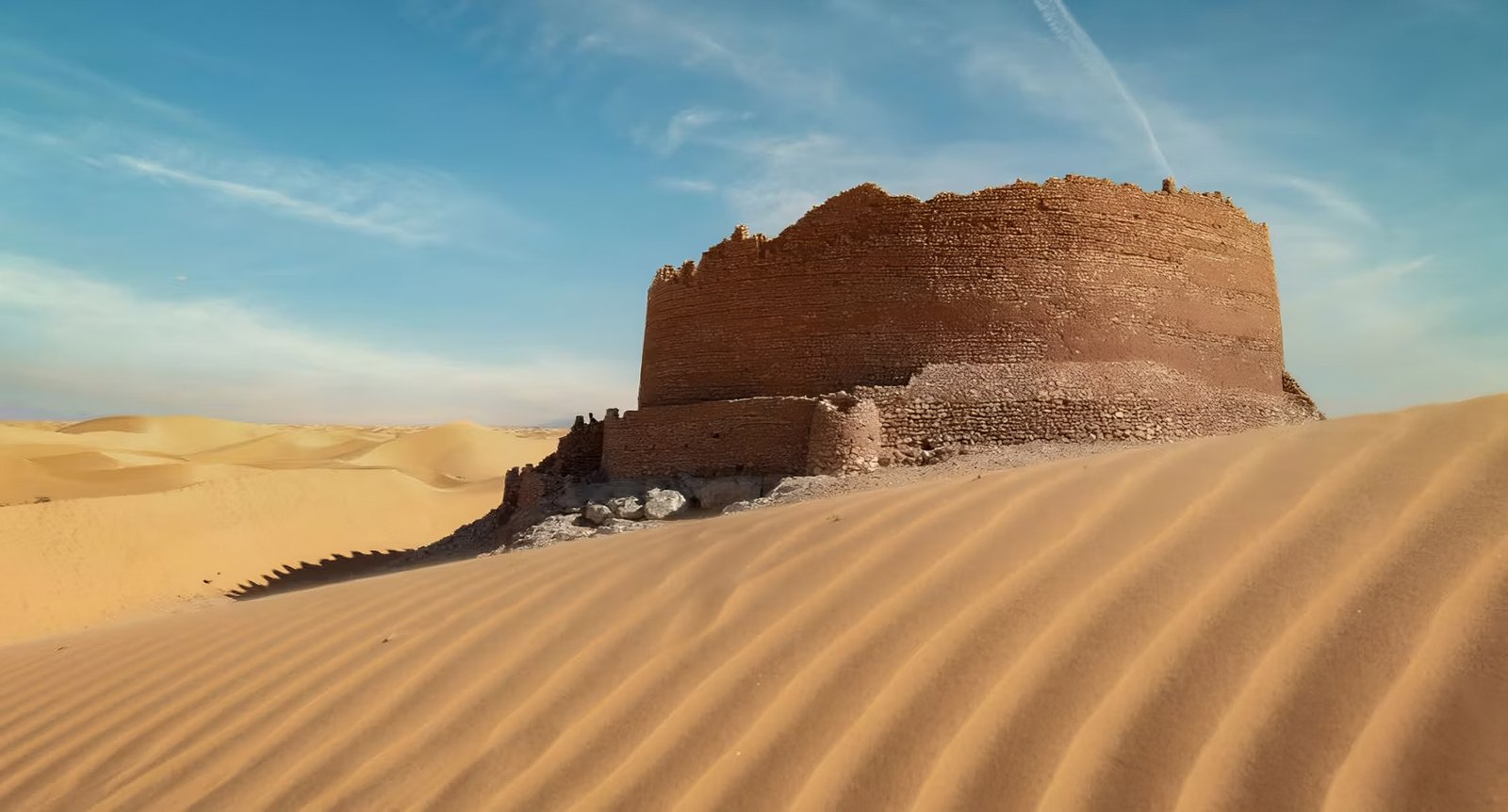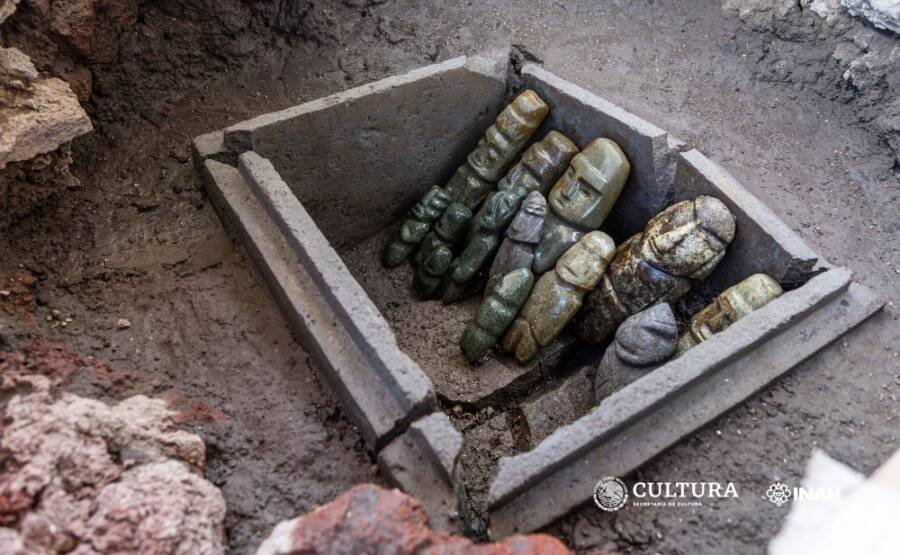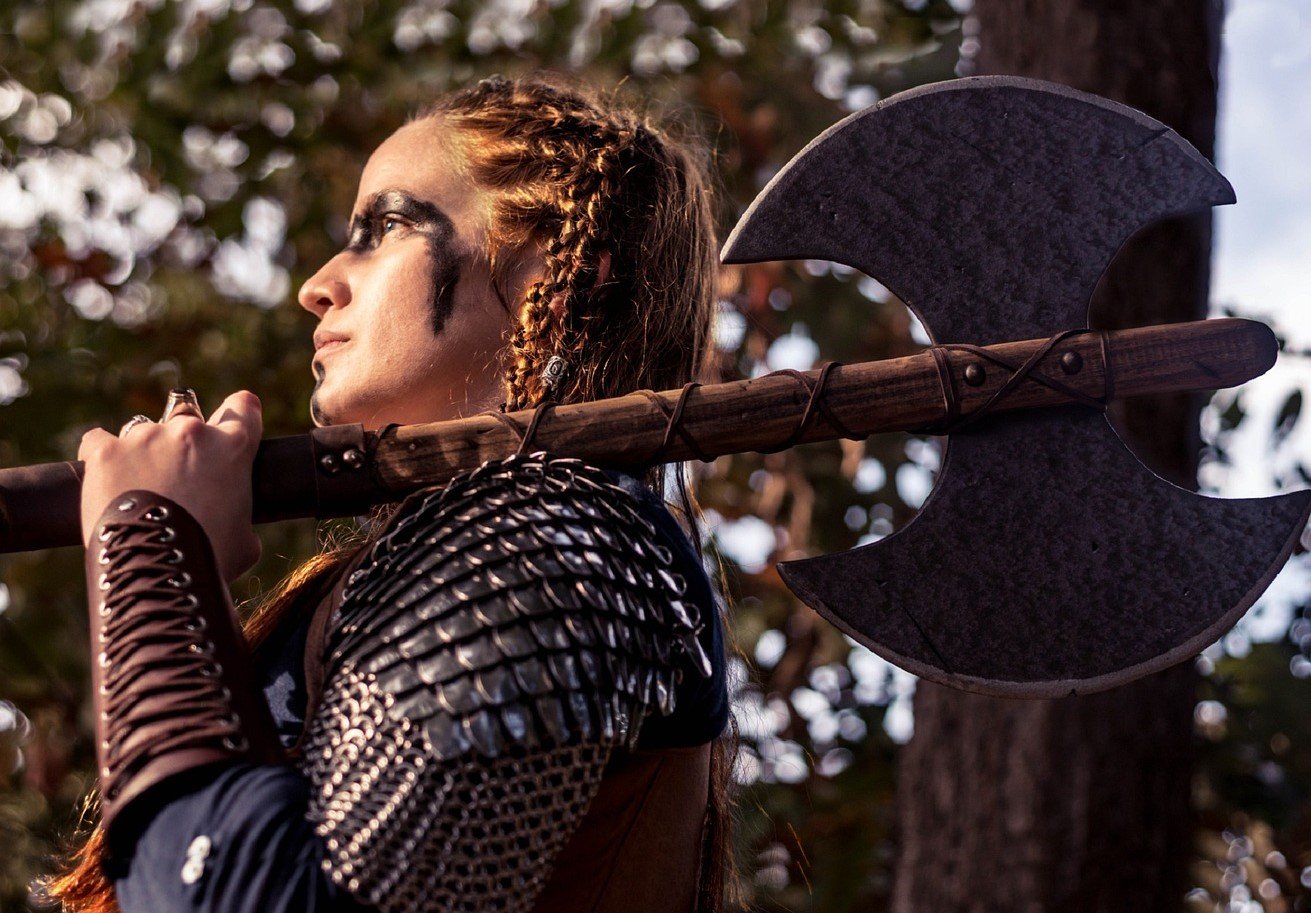In a recent archaeological breakthrough at Templo Mayor, the principal temple of the ancient Aztec capital Tenochtitlan, a group of researchers in Mexico City unearthed a concealed cache of human-like stone carvings. These intricate artifacts, likely utilized as offerings to Aztec deities, provide insights into the rich cultural and religious practices of the Aztec civilization.
The Discovery
A stone chest at the heart of the former Templo Mayor cradled a collection of 15 stone effigies. Among these, 14 represented men, while a smaller statue depicted a woman. Ranging from just over an inch to nearly a foot in height, these sculptures were meticulously carved from green metamorphic stones, bearing the distinctive features of the Mezcala style—a cultural lineage that once thrived in the Guerrero region of Mesoamerica.
Historical Context
The Aztecs, under the rule of Moctezuma Ilhuicamina (1440–1469 C.E.), expanded their empire, subduing various territories. Ilhuicamina decreed treasures to be buried in the “Sacred Precinct of Tenochtitlan,” highlighting the significance of conquered wealth. This discovery suggests the Aztecs held Mezcala sculptures in high regard, considering them relics dating back over 1,000 years, possibly used as cult effigies.

The figures were buried in a container alongside several other objects in what researchers think was an offering to Tlaloc, the god of rain.
Mezcala Culture
The Mezcala, renowned for stone works and architectural models, crafted artifacts for nearly a millennium, starting around 500 B.C.E. Some of their architectural models, often referred to as temples, served multifunctional purposes, including symbolic entrances to the spirit world or dwellings for the deceased. The Mezcala tradition of repurposing or re-carving stone objects aligns with the Aztecs’ potential reuse of looted goods.
Ritual Reuse and Offerings
Evidence indicates that the Aztecs repurposed Mezcala statues for their religious ceremonies. One figure, adorned with facial paint resembling the rain god Tlaloc, attests to this adaptation. The recently uncovered cache, labeled “Offering 186,” also contained two rattlesnake-shaped earrings, green metamorphic stone beads, sea sand, and a diverse array of calcareous materials, such as shells, snails, and corals.
Tepetlacalli Tradition
The discovery aligns with a pattern observed in previous offerings—designated as 18, 19, and 97—buried beneath monumental snake heads at the Templo Mayor site. These stone chests, known as tepetlacalli in classical Nahuatl, were likely repositories for the Aztecs’ most precious belongings, symbolizing water and fertility through sculptures of rain gods, green stone beads, shells, and snails.
Ongoing Exploration
The Templo Mayor project remains ongoing, with archaeologists anticipating further consecration offerings at the site. Plans include seeking authorization from the National Institute of Anthropology and History to explore beneath a snake head statue on the north side of Templo Mayor, potentially unveiling additional hidden caches and expanding our understanding of Aztec religious practices.







2 thoughts on “Unveiling Aztec Stone Effigies: A Discovery at Templo Mayor”
This gateway is fabulous. The splendid substance displays the maker’s commitment. I’m overwhelmed and envision more such astonishing material.
Your point of view caught my eye and was very interesting. Thanks. I have a question for you.